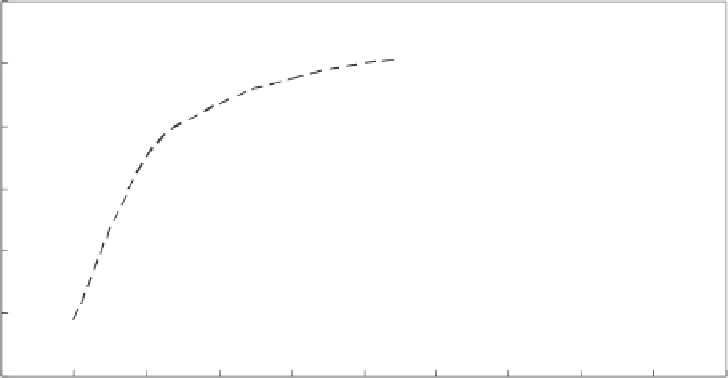Information Technology Reference
In-Depth Information
6
k
= 3
5
4
3
k
= 4
2
k
= 5
1
0
0
0.1
0.2
0.3
0.4
0.5
0.6
0.7
0.8
0.9
1
Arrival Rate (per second)
Figure 17.8
Performance of
k
-phase recursive patching
reduced by 78%, 67% and 62% at arrival rates of 0.3/s, 0.6/s and 0.9/s respectively. The
improvement is particularly significant at higher arrival rates. This can be explained by the
observation that at higher arrival rates, the streams are more closely spaced in time and thus
enable more data sharing through recursive patching.
The latency is further reduced when 5-phase recursive patching is employed although the
reduction is less significant. Compared to transition patching, 5P-RP can achieve latency
reductions of 81%, 78% and 70% at arrival rates of 0.3/s, 0.6/s and 0.9/s respectively. Larger
values of
k
will likely result in further resource reductions but the marginal improvements will
decrease.
The patching techniques illustrated in this section are by no means exhaustive. In addition to
applying patching during start-up of a newmedia stream, it is also possible to further reduce the
resources consumption by continuously merging existing on-going streams. Interested readers
are referred to the literature [5-17] for more details.
17.4 Caching
In actual deployment of media streaming services over a large geographical area it is common
to structure the network in a hierarchical manner. In particular, the operator may place the
media servers in the central office, which links up with the customers through a high-speed
WAN connection. Once reaching the customer neighborhood, the regional distribution network
will deliver the media data to the individual customer.
In this scenario, the media data will go through two types of networks, the long-distance
WAN link and the short-distance residential network. Obviously, the bandwidth cost will be





























































Search WWH ::

Custom Search